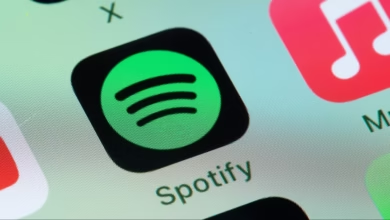Spotify Lossless: The Inconvenient Upgrade You Need

▼ Summary
– Most listeners using wireless earbuds, Bluetooth speakers, or phone speakers will not notice a difference between Spotify’s high-quality and lossless audio streams.
– Lossless audio provides a noticeable improvement over Spotify’s normal 96Kbps streams, especially in high frequencies, but differences from high-quality 320Kbps are subtle and vary by music genre.
– To access Spotify Lossless, users must use the desktop or mobile app (not web) and wired headphones or quality speakers, as Bluetooth does not support lossless due to bandwidth limitations.
– Spotify’s lossless is capped at 24-bit/44.1kHz, while competitors offer higher-resolution options, but the benefits of hi-res are extremely subtle and often not worth the extra hardware or bandwidth costs.
– Lossless audio is most beneficial for acoustic and vocal-heavy music, providing subtle improvements in clarity and reduced distortion, but requires focused listening and proper equipment to appreciate.
For many music lovers, the promise of Spotify Lossless audio represents a significant leap in listening quality, but its benefits remain entirely dependent on your setup and listening habits. If you typically enjoy music through wireless earbuds, Bluetooth speakers, or even straight from your phone’s built-in speakers, you’re unlikely to detect any difference between the standard 320Kbps streams and the new lossless tier. However, those using wired headphones or high-fidelity speakers with Spotify Connect may find the upgrade genuinely worthwhile.
The gap between Spotify’s normal 96Kbps streams and its new 24-bit/44.1kHz FLAC files is substantial, even casual listeners can usually tell them apart. Lower bitrates tend to muddy high frequencies and introduce audible artifacts, a legacy of older compression methods. Stepping up to the 320Kbps high-quality setting already delivers a clear improvement, but moving into lossless territory brings more subtle gains. In many cases, especially with heavily produced genres like hip-hop, metal, or electronic music, the nuances between high-quality and lossless can be hard to spot. Tracks built around samples, distortion, or extreme compression often mask the finer details.
Where lossless audio truly shines is in acoustic or vocal-forward music, where clarity and texture matter most. During testing, albums like Nina Simone’s Pastel Blues revealed delicate improvements, background noise felt more textured, high-hats rang with added precision, and even vintage recording distortions came across less harshly. These aren’t night-and-day differences, but for attentive listeners, they enrich the experience.
To access these upgrades, you’ll need to put in a bit of effort. Lossless streaming isn’t available through the web player, you must use Spotify’s desktop or mobile app. More importantly, Bluetooth does not support lossless audio due to bandwidth limitations. Even advanced codecs like LDAC or aptX HD aren’t universally supported, so for true lossless playback, wired headphones or a dedicated speaker system are essential. Headphones often make it easier to detect subtle details since they minimize ambient noise.
It’s worth noting that Spotify caps its lossless offering at 24-bit/44.1kHz, while rivals like Tidal, Apple Music, and Qobuz offer high-resolution files up to 192kHz. But for most people, this isn’t a meaningful drawback. The audible difference between standard lossless and hi-res lossless is minimal at best, and taking full advantage of hi-res audio usually demands extra hardware like an external DAC, which can range from an affordable dongle to a luxury investment.
In side-by-side comparisons using studio monitors and quality headphones, differences between services were often subtle and sometimes inconsistent. Apple Music’s encodings occasionally sounded cleaner than Spotify’s, but distinguishing between standard and hi-res lossless on the same platform proved challenging. Additionally, hi-res streaming consumes significantly more bandwidth and can lead to playback issues like stuttering or buffering, making it impractical for everyday use.
The reality is, most listening happens over Bluetooth, which doesn’t support lossless. If you have the right gear and a quiet environment, Spotify’s lossless tier offers a worthwhile upgrade, especially for acoustic, jazz, or classical recordings. But chasing after hi-res labels on other platforms may not deliver the audible payoff you expect. For now, enjoying music in clearer, richer detail is possible, if you’re willing to plug in.
(Source: The Verge)


